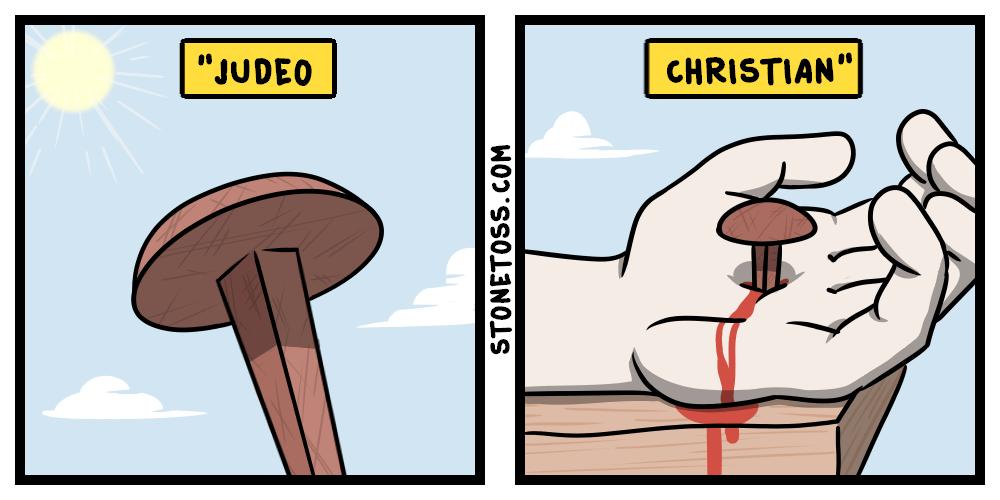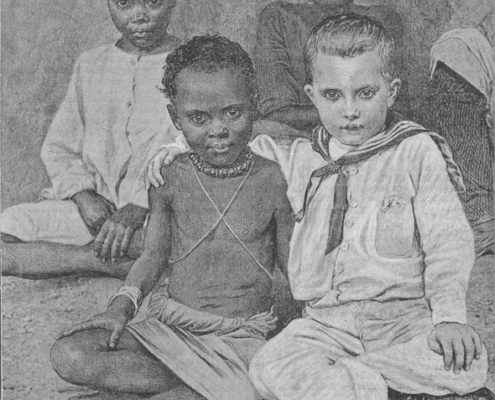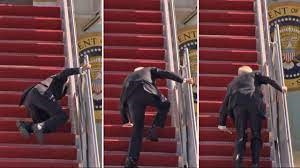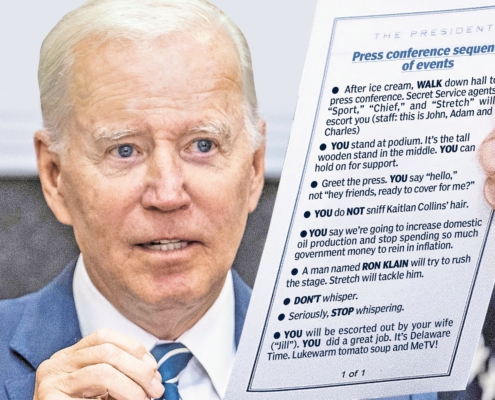Review of “Romancing Opiates”: Personal Agency Is Critical
Romancing Opiates: Pharmacological Lies and the Addiction Bureaucracy
Theodore Dalrymple
Encounter Books, 2008; orig. pub.: 2006
“Man is the only creature capable of self-destruction, and only man decides in full consciousness to do what is bad, even fatal, for him.” – Theodore Dalrymple
Opiates and their synthetic cousins, opioids, have long been a major topic in the public consciousness, particularly affecting White men. But much of what most people believe they know about these substances is simply wrong. British author Theodore Dalrymple has dealt with hundreds of heroin addicts in his career as a doctor and in Romancing Opiates: Pharmacological Lies and the Addiction Bureaucracy he makes several observations from experience that will be surprising to most.
Dalrymple begins with an interesting criticism of the much-vaunted value of freedom. In his time working in a prison in a British slum, he often saw new inmates who looked “as if they had just been liberated from a concentration camp.” They were visibly starving, showed signs of vitamin B deficiency, and had many sores on their bodies. This condition is not caused directly by drug use, but rather by the total neglect of their own health which frequent intoxication facilitates. He would remark to them that “for them, freedom was a concentration camp; their own desires acted as the concentration camp guards.”
The addicts’ health improved dramatically while they were in prison, and often declined again shortly after their release. Many of them were aware of this pattern and even asked the judge to keep them in prison longer as a result. “Freedom was bad for them,” Dalrymple explains, “because they did not know what to do with it.”
The standard view today is that heroin addiction is a medical condition, but this is wrong in several ways. Firstly, a medical condition is a physical affliction from which a patient suffers, not simply a behavior. There are medical conditions clearly caused by behavior, such as lung cancer caused by smoking, but even in this case, it is the cancer which is the medical condition; smoking is simply a habit. The cancer can be treated by doctors, but the habit requires the patient’s own agency to break.
This distinction is widely denied with regard to heroin. Addicts tell their own stories in a manner which implies no personal responsibility, and authorities uncritically accept this. Dalrymple reports on how many claim to have begun their addiction by simply “falling in with the wrong crowd,” but notes that he has never met a single self-identifying member of that crowd. Many will similarly claim that they are “easily led,” but none have been easily led to study mathematics or foreign languages. People are most easily influenced by and likely to “fall in with” those they look up to or identify with. Neither their social connections nor their drug use was forced on the addicts, but came instead from their own desires.
Further, the common belief is that addiction happens easily by simply trying heroin, as if the user has little choice in the matter. But even opiate apologists such as nineteenty-century writer Thomas de Quincey in Confessions of an English Opium Eater admit that this is not the case. Opium is very similar to heroin, and de Quincey notes that he took opium hundreds of times over a period of years without becoming addicted. A similar thing can be observed in modern times; some still take heroin intermittently without becoming addicted, and the Encyclopedia of Drugs and Alcohol estimates that for future addicts, “from first use to daily use typically takes about one year, but it may take much longer.”
Heroin addiction is often described as a sort of horrible chemical slavery in which the threat of withdrawal overpowers the user’s will, forcing users to continue using even if they wish to quit. But Dalrymple notes that withdrawal from heroin is much less dangerous than withdrawal from alcohol; the latter can be fatal, while the former never is. The author has observed many heroin addicts going through withdrawal, and notes they have never displayed any symptoms that were severe or required hospitalization. The discomfort of withdrawal is greatly exaggerated by addicts, often in an attempt to pressure the doctor to prescribe more opiates, and the author finds that they quickly change their tune once he calls their bluff. Underlining how much of the condition is psychological, several experiments in the 1930s demonstrated that addicts can even be convinced that they are under the influence of heroin or morphine when in fact their supply has been cut off, or that they are not in withdrawal when in fact they are.
Interestingly, Dalrymple has also dealt with alcoholics facing withdrawal, and notes that their behavior is quite different. Heroin addicts claim that withdrawal is unbearable and will even make frivolous threats of murder or suicide to obtain more drugs. Alcoholics are in more serious danger, but never make threats, and if they speak of their suffering at all their complaints are much more in line with what the doctor can confirm. The author offers no explanation of this contrast, but presumably different types of people are drawn to heroin addiction than to alcoholism.
It is also widely believed that addicts are compelled to steal to fund their habits, but this is far from the case. Firstly, as withdrawal is not nearly so terrifying as often claimed, an addict who is short on cash can simply stop using temporarily. Faced with being uncomfortable for a few days, robbery would not enter most people’s minds. Secondly, the use of opiates in itself is not necessarily incapacitating, so some habitual users support their habits through legitimate employment. Dalrymple quotes Lawrence Kolb in 1928, at the time a prominent American expert on addiction, who wrote that out of 119 addicts, only 29 had poor employment records after their addiction began, and that
Twenty-two of them worked regularly while taking opium for twenty-five years or more; one of them, a woman aged 81 and still alert mentally, had taken 3 grains of morphine daily for 65 years. She gave birth to and raised 6 children, and managed her household affairs with more than average efficiency. A widow, aged 66, had taken 17 grains of morphine daily for most of 37 years. She is alert mentally … she does physical labor every day and makes her own living.
Third, if heroin addiction drove them to crime, the addicts would presumably have been law-abiding before they started using heroin. But the author interviewed 100 addicts and found that 67 of them had been to prison, meaning they had been convicted of numerous crimes, before they tried heroin for the first time. The connection between stealing and heroin addiction is instead that addiction is more attractive to people with antisocial tendencies. Rather than out of desperation, they often steal for the thrill.
Another falsehood of the standard model which Dalrymple refutes is that addicts must have medical assistance to quit. On the contrary, many have quit with no treatment at all. During the Vietnam War an estimated 20 percent of American service members were addicted to heroin. After returning home, most simply quit; “by two and three years after their return, the addiction rates among those who had served were no higher than among those who qualified for the draft but did not serve in Vietnam.” The author also quotes a major text on substance abuse which notes in passing that addicts can give up their habit through “detoxification only” in the case of “those who adopt a new religion or lifestyle.”
Due to their effects on vital functions, opiates are more likely to cause fatal overdoses than most drugs, but even this does not occur in the way one might expect in a genuine disease, with death coming to the patient despite their best efforts. Instead it is largely due to the recklessness of the users. Dalrymple notes that since most stop using while they are in prison, they have a much lower physical tolerance to the drug’s effects once they are released. They will thus be in more danger of an overdose upon beginning to use again unless they take a lower dose; he estimates that the death rate is thirty-four times higher in the first two weeks after release from prison than at any other time in their unincarcerated lives. He quotes his interaction with one addict who had started using again after his release from prison and took such a high dose that he needed artificial ventilation:
“Did you remember what I told you?” I asked.
“Yes.”
“Didn’t you believe me?”
“Yes, I believed you.”
“Then why did you take no notice?”
“I met up with my old friends.”
Lethal overdoses are also more common when opiates are used together with other drugs which have a similar depressant effect on the vital functions. These include alcohol and benzodiazepines, a class of anti-anxiety drugs which includes Valium, and which is found in the majority of deaths where the deceased has also taken methadone. Mixing drugs like this could be easily avoided by a modicum of self-discipline, but apparently this is in short supply for many users. Even doctors seem to share this carelessness, as they continue to prescribe both types of drugs together.
It is absurd to classify opiate addiction as a disease. It can only come about through the “patient’s” own repeated decisions, and can be cured in a matter of days with no medical intervention. This can hardly be said for a condition like multiple sclerosis. This is not to say that addiction is not a serious condition, but that it reflects a deeper issue which doctors cannot treat.
There are also popular claims in the opposite direction — that rather than a demon which possesses the user, opiates are actually a profound muse. Several prominent writers beginning in the Romantic era have made this claim, including Thomas de Quincey and the English poet Samuel Taylor Coleridge. That great artistic ideas can spring from opium dreams more than from sober minds is a claim that cannot exactly be disproven, but neither is there any evidence for it beyond the artists’ own grandiloquent accounts of their experiences. Dalrymple also mentions that of the millions who have been addicted to opiates, only a small fraction have produced anything artistically notable.
What, then, is the nature of opiate addiction? Darlymple argues that it is a spiritual sickness. Partly this is the common sickness of the underclass from which addicts often come. Traditional sources of meaning in life such as religion are absent, as their betters saw fit to deconstruct them in favor of nihilism. Their family lives are chaotic, and their sexual relationships short-lived and violent. Uneducated and unskilled workers have little hope of a fulfilling career, and what work is available to them pays barely better than welfare. As the author puts it, “while a man might once have derived satisfaction from performing a menial task well, from leading a life of modest usefulness to others, this is not an age in which such humility is very common.”
Young people in this situation have no purpose. Daydreaming is the closest they can imagine coming to escaping their unsatisfying lives — the author notes that many addicts tell him they use the drug “to forget” — so there is not much incentive to avoid a habit which means spending much of their time in a dreamlike state. He argues that the life of an addict actually provides a degree of discipline and focus, since raising funds and finding his supply imposes demands on the addict, the reward for which is obvious. Further, the danger from rival drug gangs or the police provides more excitement than their lives might otherwise offer.
As Dalrymple puts it, it is easier to provide a prescription than a reason for living, so the establishment has provided plenty of the former and none of the latter. Indeed, mainstream interventions seem to further erode the latter by infantilizing the addict.
Assuming that his condition is a disease, authorities respond as if the addict is powerless to do anything about it. Rather than being a matter of his own decisions which he might be pressured to change, they take his behavior as a given, and its consequences as a technical problem for them to solve.
The most common “solution” for opiate addiction is to prescribe a synthetic opiate called methadone. This is a long-acting drug, with one dose producing its effects over a period of about 24 hours, as opposed to 4-6 hours for heroin. Theoretically this frees the addict from the “need” to find and consume heroin every few hours, as well as the “need” to finance the habit through crime.
In practice, though, the results are questionable. Despite dramatic increases in the number of methadone prescriptions in the 1980s and 90s, there was no corresponding decrease in the number of addicts. On the contrary, heroin addiction has become much more common. From 859 in 1978, the number of addicts in Britain increased to over 100,000 in the year 2000. Many users of methadone continue to use heroin, although they do so less when given particularly high doses of methadone. They often continue to use other drugs as well, and as mentioned above are even prescribed them.
They also continue to steal, although the number of thefts may be reduced. In one study in Sheffield the average number of “acquisitive” crimes committed by a heroin addict treated with methadone dropped from 13 a month to three, but this is was only among the minority of subjects who took the drug exactly as instructed, and it is still 36 offenses a year — hardly the law-abiding lifestyle that we would presumably prefer.
Methadone can also be dangerous in itself, generally when it is not taken under medical supervision but diverted to the black market. In Scotland in 1998 for instance there were 114 overdose deaths attributed to heroin and 64 attributed to methadone. In the City of Dublin from 1998–2000 there were 225 “drug-associated” deaths, of which 157 were associated with heroin and 144 with methadone — the numbers do not add up neatly because some deaths involved both drugs together.
The technical problem-solving mindset even extends to a policy which the author calls “retoxification.” Since addicts usually lose their tolerance to the drug while in prison and are at greater risk of overdose when they are released, the authorities respond by simply prescribing them opiates while in prison. This reinforces the idea in the addict’s mind as well as that of the authorities that he is not a human being responsible for his behavior, but a malfunctioning machine whose faulty programming must be taken for granted and routed around.
In this condition, why should he make any effort to improve himself? As the author puts it,
If consequences are removed from enough actions, then the very concept of human agency evaporates, life itself becomes meaningless, and is thenceforth a vacuum in which people oscillate between boredom and oblivion. They have nothing to hope for and nothing to fear; they are more likely to seek the intermittent oblivion of opiate addiction. (p. 41)
The author notes that doctors often realize that his observations on addiction are correct, but everyone continues as if they are not. This is for two reasons. First of all, there is now an established bureaucracy which has an interest in perpetuating addiction in order to perpetuate their funding. The book gives the example of a woman who had been using heroin for about twenty years, along with other drugs, and had been prescribed methadone for most of that time. When she told her drug counselor that she was sick of drugs and wanted to cut down on methadone, the counselor became frightened and angry, declaring that this would be “extremely dangerous.”
Dangerous for whom? It could be no worse than her current life, in which she had contracted hepatitis B and C, and had several children which had been removed from her care at birth as she was considered an unfit mother. The danger, although the counselor did not admit this, was that “if other addicts followed suit, what future would there be for drug clinics?”
Second, there is an attitude of moral superiority on the part of those who claim to understand the misunderstood. Many seem to enjoy framing certain groups of people as innocent victims so that they can make a virtue of displaying compassion for them. Many of those employed in the addiction industry even go so far as to dress and speak like addicts to demonstrate how “nonjudgmental” they are. This stance would be threatened by putting any pressure on the addicts to take responsibility for and change their behavior.
In the 15 years since Dalrymple’s book was first published things have gone along essentially as before. People still speak as if addiction is merely a medical condition which afflicts the addict. Although the author called for the closure of drug addiction clinics, they remain open and the “patients” are still treated in the same ineffective way. We can only hope that someday the authorities are replaced by a new group of people, one which cares about our population’s long-term well-being more than “fighting stigma” or maintaining funding.



 Blatant blasphemy: The violent criminal George Floyd is portrayed as Christ
Blatant blasphemy: The violent criminal George Floyd is portrayed as Christ  Justin Welby, a
Justin Welby, a  Race-blind universalism from the Church of England in 1893
Race-blind universalism from the Church of England in 1893 Whites are susceptible to sentimentality: a kitten from Home Words for Heart and Heath
Whites are susceptible to sentimentality: a kitten from Home Words for Heart and Heath Green light signals to the enemy?
Green light signals to the enemy?







